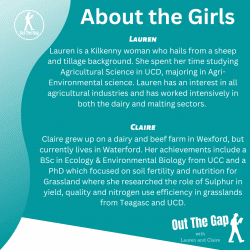Out The Gap – Issue 10


Drying Off
The next major event to occur on most dairy farms after housing will be the drying off of cows for the winter months.
Heifers and thin cows need to be dry for 12 weeks to give them a break, allow them to gain body condition and replenish the mammary tissue in the udder. Mature cows should be dry for 8 weeks to gain or maintain body condition and to replenish mammary tissue.
On the majority of Irish farms, traditional drying off was achieved by blanket treating every cow with intramammary antibodies at dry off in combination with a teat seal. Blanket treating groups of animals with antibodies when a large proportion of those animals are healthy is a questionable practice, as it can contribute to antimicrobial resistance (AMR). Selective dry cow therapy involves treating only cows that have an infection with an intramammary antibiotic and the remaining cows are dried off with a teat seal only.
Some points to consider before using selective dry cow therapy are:
- Individual cow somatic cell count (SCC)
- Bulk tank SCC
- Number of clinical mastitis cases in the herd
- Hygiene levels at dry off and across the dry and calving period

Management recommendations around drying off
- Clip cows tails before drying off
- Dry off cows as soon as yield has reduced to about 9L per day
- Preparation is key
- Set aside adequate time
- Dry off cows in manageable batches
Good hygiene practices are essential at drying off so as not to introduce infection to cows during the drying off process. This is especially true with selective dry cow where you are putting a sealer in the healthy cows.
The following steps should be followed:
- Identify the cows to be dried off with sealer only and draft following milking
- Wash out the parlour and get organised
- Take your time and don’t try to dry too many cows in one day
- Thoroughly clean the teats, seal, teat spray and mark well to identity that cow has been dried
- Stand the cows in a clean yard for a period to allow teats to close
- Move to a paddock or clean cubicles and maintain high standard of cubicle hygiene in particular in the 2 weeks after dry off and again in 2 weeks prior to calving
There is two critical stages of the dry period when udder health is at risk are: the first week after drying off and the week prior to calving. During the first critical stage, the udders natural defence mechanism – a keratin pug in the teat canal is formed, while in the second stage, prior to calving, this plug slowly disappears in preparation of lactation. The keratin plug prevents bacteria from entering the teat canal during the dry period. To reduce the risk of infection during the entire dry period a clean environment is very important. Good hygiene and a good shed climate prevent growth/ persistence of bacteria in bedding material and possible contamination of the udder when lying down. Grassland Agro has a powerful bedding material; Actisan 360, where it is effective on serval targets; 1. Litter drying 2. pH management 3. Ammonia and odour control 4. Bedding sanitation.
Be sure to explore all possibilities and keep those cows clean, dry and happy. 
